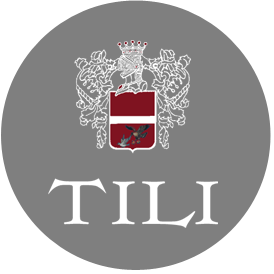
Umbrian Sweets: Origins and Symbolism
The Tiber River is not just the natural backbone of Umbria; it’s the place where humans and nature have harmoniously settled and nurtured an entire population with its traditions, customs, and culture. The Etruscan territory stretched to the Tyrrhenian Sea, and it was through the sea that the Etruscans came into contact with different populations, cultures, and cuisines. On the other hand, the Umbrians, situated to the right of the river, were far from the sea and relied solely on local food sources. The distinctiveness of the two populations can be summarized in two small yet significant fruits: almonds and walnuts. The Etruscans used almonds, while the Umbrians used walnuts. In those ancient times, trees were associated with concepts of sacredness and good omens. The almond tree was seen as a harbinger of well-being and happiness, while the walnut tree was associated with witchcraft practices. However, despite the tree’s bad reputation, its fruit was consumed, and its wood was used. These different uses are still reflected today in the sweets, faithful to their roots and guardians of ancient traditions.
Of Etruscan origin are the “torciglione” and “fave dei morti” (beans of the dead). The “torciglione” is a dry Christmas dessert made from flour, sugar, almonds, and pine nuts, shaped like a rolled-up snake, or perhaps a lake eel biting its tail. According to tradition, its origins date back to the pagan communities around Lake Trasimeno, who wanted to symbolize the cyclical nature of the dying and rebirthing year. The “Fave dei Morti” are small bean-shaped cookies made from almond paste and sugar, typical of the All Saints’ Day celebration. The name itself gives us an idea of how ancient this custom is. They were prepared for funerals and consumed at the deceased’s tomb during the funeral banquet. These sweets evoke the bean fruit itself, which was already understood as the nourishment of the “lemures,” or the souls of the dead, during the Roman festival of “Lemuria” in early May.
Walnuts and hazelnuts, on the other hand, were food for the poor, characterizing the left bank of the Tiber. Despite their poverty, the Umbrians developed a sweet that is their pride and joy and well-known to all: the “Rocciata.” Its origins are ancient, with a trace found not too dissimilar in the Eugubine Tables from the 3rd/2nd century BC. According to some historians, there is also a Lombard influence: it is similar to a strudel, with apples and nuts wrapped in thin dough. Its spiral shape is loaded with symbolism, expressing the cyclical and rotating form of the year when the end connects with the beginning. Even in “Maccheroni Dolci,” walnuts are the main ingredient. The origin could be Greek-Byzantine, as suggested by the etymology, albeit controversial, from the Greek “makarios” (blessed). They are prepared for the All Saints’ Day festivities and also eaten on Christmas Eve. The recipe includes macaroni, walnuts, sugar/honey, and alchermes.
Today, the demarcation line represented by the Tiber is still found in gastronomic culture, which remains faithful to its origins and highlights the ancient territorial dualism, sometimes a source of variety and richness.






Sorry, the comment form is closed at this time.